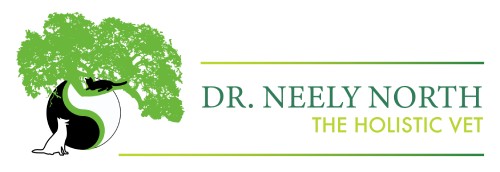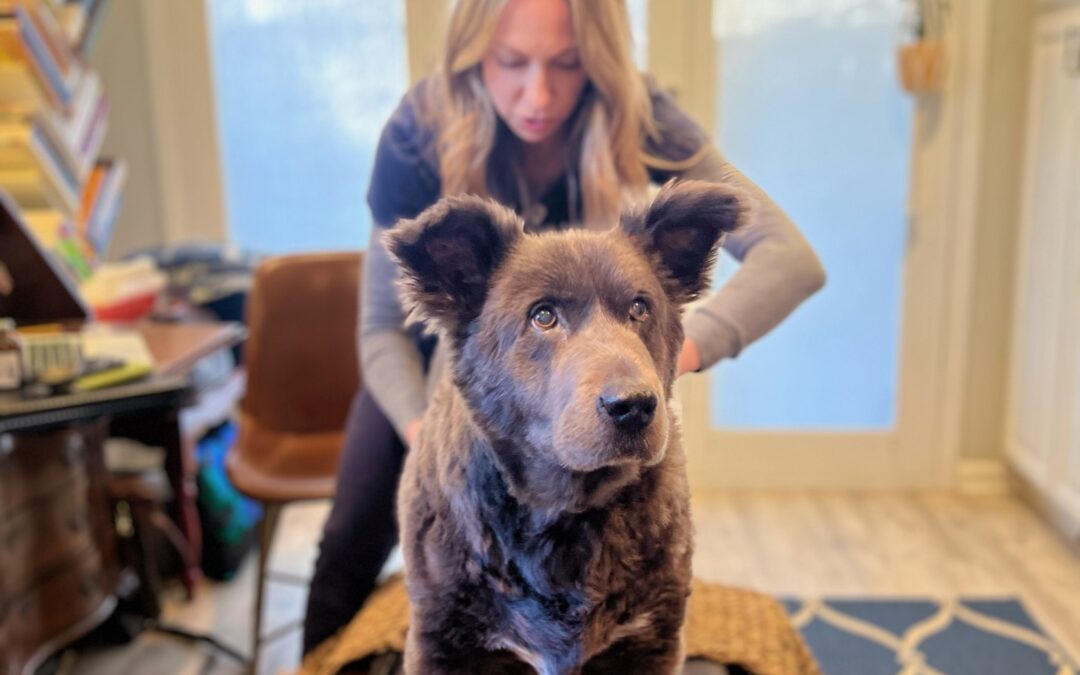Veterinary Spinal Manipulation (animal chiropractic)
Veterinary Spinal Manipulation is a manual therapy, which can be used for many health and performance problems. It focuses on the biomechanical dysfunction of the spine and its effect on the entire nervous system throughout the body.
Veterinary Spinal Manipulation Therapy does not replace traditional veterinary medicine; however, it can provide additional means of diagnosis and treatment options for spinal problems as well as biomechanical related musculoskeletal disorders. Veterinary Spinal Manipulation Therapy can often eliminate the source of acute or chronic pain syndromes.
Vertebral Subluxation Complex (VSC)
Chiropractors define a VSC (referred to as a “subluxation”) as the functional misalignment of a vertebra or the limited mobility of its facet joints. If a subluxation exists, the animal loses normal flexibility of its spine, affecting performance and resulting in stiffness and muscular tension.

The spinal cord is the “information highway” allowing the transmission of information between the brain, muscles, skin and all organs. Reduced mobility between two vertebrae can affect the nerves that leave the spinal cord between these adjacent vertebrae. Negative alteration in the nerve’s function can lead to interference in the flow of stimuli or information, which is necessary for smooth coordination of body functions and muscle contractions
Small disturbances are usually only caused by a slight interference; however, they can keep the animal from performing at its best in daily routine as well as in demanding exercises. Missteps resulting from lack of coordination may cause injury to other joints and tendons or ligaments in the legs. An animal with a subluxation will change its posture to compensate for the restricted mobility of its spine and to avoid pain. This triggers increased mechanical strain on other parts of the spine and extremity joints, causing secondary restrictions and deterioration of the condition.
The Spine
An animal’s spine is a very complex structure consisting of bones, ligaments, muscles, and nerves. Numerous muscles are attached to the vertebrae enabling the spine to move. Even though individual vertebral joints have little mobility, the back and neck as a whole are very flexible. Without this flexibility, an animal cannot move fluently, jump obstacles, or perform properly.
Nerves branch off from the spinal cord and leave the spinal canal in pairs. As the central nervous system monitors and controls all organ and tissue function, the transmission of information to and from it must flow freely to allow proper function.
How can a vertebral subluxation complex be corrected?
When a chiropractor, or veterinarian professionally trained in animal chiropractic, identifies a subluxation, he or she aims to correct the misalignment of the spine and restore mobility to the facet joints.
Realignment is made via a quick, short thrust along the plane of the joint. This is called an adjustment. The adjustment is a very specific, high speed, low force maneuver that moves the affected joint beyond the normal physiological articular range of movement, without exceeding the boundaries of anatomical integrity. It is done by placing the hands directly on the affected vertebra (previously identified in the examination). Only subluxated vertebrae are adjusted.
Even though horses have a very large, thick muscle mass over the spine, the vertebral joints are flexible and relatively easy to manipulate with minimal force. If the correct technique is used the ligaments are not adversely affected.
Veterinary Spinal Manipulation (chiropractic) Treatment Can Be Used For:
- Chronic musculoskeletal problems
- Acute problems such as tension or stiffness
- Prophylactic treatment to maintain fitness
- Maintain soundness in older animals
- Enhance the performance ability of sport animals
- As a complementary treatment for chronic lameness such as bone spondylosis or tendon problems like cruciate ligament in the dog
What are the Symptoms?
Animals with VSCs may present with many symptoms, the most common of which is pain. Animals with back pain often express this in their posture or in their refusal to work. The animals attempt to compensate for the pain by changing its posture and way of going can result in other problems such as joint changes.
The following symptoms may indicate pain caused by a subluxation in dogs:
- Reluctance to move
- Abnormal posture
- Disability to climb stairs or jump onto raised areas
- Limited performance
- Signs of pain when performing certain movements or being lifted
- The animal only lies on one side
- Disobedience when jumping
- Altered sitting position (so-called “puppy sitting”)
- Changes in behavior
- Frightened or painful facial expression
- Sensitivity to touch
Subluxations in the spine can affect muscle coordination and mobility of the dog, thereby causing decreased performance. The following symptoms may occur:
- Unleveled gait rhythm
- Irregularity of gait which cannot be assigned to a particular leg or gait
- Stiffness after sleeping
- Stiffness when bending and in its general posture
- Muscular atrophy
- Lick granuloma
- Sciatica neuralgia
- Undefined lameness. This can be caused by VSCs in the joints of limbs or the spine.
- Shortened stride in one or more legs
- Overall decreased range of motion in gait
- Recurrent anal gland infections
- Recurrent ear infections
- Incontinence. This can be exacerbated by VSCs in the lumbar vertebrae.
- Hypersensitivity and hyposensitivity
- The back does not swing
- Toenails worn irregularly
How to Recognize Back Problems:
Qualified chiropractors are trained to recognize and treat subluxations. However, riders, horse trainers and owners can monitor whether or not their animals have spinal problems. Dog handlers, trainers or owners can look for signs of VSC in their pets. Inspecting the spine before purchasing is just as important as inspecting the legs.
How to Prevent Spinal Problems:
The proper functioning of the back and neck is an important basis for maintaining the animal’s performance. For this reason, PREVENTATIVE health care should be high on the agenda of any owner.
When selecting your animal for a particular discipline, you should always pay attention to their build. Many breeds have been selectively bred for years to achieve certain goals and are therefore suitable for particular disciplines such as dressage, jumping or western riding in the horse, or agility, hunting or gundog-work in the dog. Regular massage, balanced foot/nail care, proper conditioning training, and well-fitting equipment are also very important. Gentle training aid methods should be used to avoid jerking and pulling on the animal’s spine. Confinement to a stall or kennel can adversely affect an animal’s condition. Regular exercise is invaluable to promote normal neurologic input, therefore, animals should be permitted to exercise freely as much as possible.
Sources:
Dr. Holly Landes (one of my teachers from the IVMI – Integrative Veterinary Medical Institute)
International Veterinary Chiropractic Association

